John Tawell
The Man Hanged by the Electric Telegraph
The development of the electric telegraph
By 1845 the electric telegraph was established as a means of communication by the railways. The telegraph instruments in use were developments of the Cooke-Wheatstone five needle telegraphs first demonstrated in 1837. The five needle telegraph, and its four needle derivative, had several limitations. Firstly, six letters of the alphabet could not be represented (C, J, Q, U, X and Z). Secondly, operating four needles required five wires or four if the earth was used as a common return. Nevertheless, the quantity of wire required was prohibitive. The Cooke-Wheatstone two needle telegraph therefore addressed both of these limitations. As its name suggests, the two needle telegraph uses two needles which can independently be moved left or right. Letters (and numbers) were therefore represented by the movement of one or both needles. The code used is shown below.
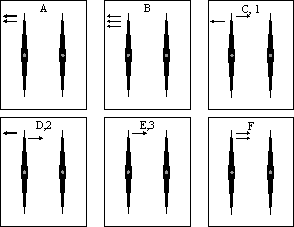
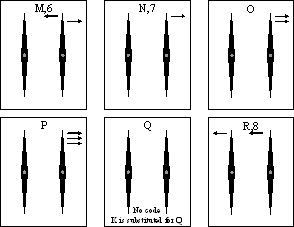
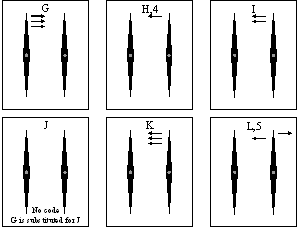
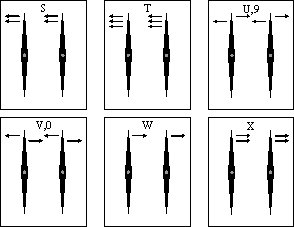
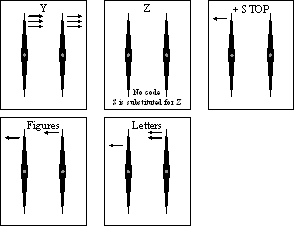
For example, the letter A is indicated by two movements of the left needle to the left; the letter N by one movement of the right needle to the right; the letter V by two movements of both needles to the left and then to the right. Numbers could also be represented but you had to signal a change from letters to numbers (and then back again). This was done by one movement of the right needle to the left followed by one movement of the left needle to the left – not to be confused by the letter H followed by STOP which generates the same needle movements!
It can also be seen that the full alphabet still cannot be sent and three letters remain omitted – J, Q and Z. Substitutions for these are given (G, K and S).
Needless to say the need to remember substitutions, to identify the special codes for swapping between letters and numbers, and the general complexity of the various needle movements meant that the telegraph operators had to be very skilled and that messages were often mis-understood.
John Tawell
John Tawell was born in 1784 and from the age of 14 he had been attending regular meetings of his local Quaker’s movement. In 1814 he was convicted of forging a £10 bank note for which he should have been sentenced to death. However, his Quaker background, and their opposition to the death penalty, meant that his sentenced was commuted to 14 years deportation to the colonies (Australia). In 1820 he was granted a pardon and became a free man. He chose to stay in Australia where he set up a very successful chemist’s shop and later his wife and children left England to join him. He continued to dress as a Quaker and attend regular meetings. In 1831 the family returned to England but, sadly, by 1838 both of his children and his wife, Mary, had died. It was then that he began a relationship with Sarah Lawrence with whom he had two more children. However, in 1841 he married a Quaker widow but continued his affair with Sarah who had now changed her name to Sarah Hart and moved to a cottage at Salt Hill, near Slough, paid for by John. By 1845 John’s financial position had worsened. On the 1st January 1845 he entered a chemist’s shop and bought a treatment for varicose veins called Scheele's Prussic Acid - which is a poison if drunk. He boarded a train and travelled to Slough to meet with Sarah. There he poisoned her. Sarah’s screams and cries for help were heard by a neighbour and as John left, he was spotted. John made it back to Slough station where he boarded the 7:42pm train to London Paddington.
Slough and Paddington were stations on the Great Western Railway and had been fitted with a Cooke-Wheatstone two needle telegraph system.
Sarah Hart’s neighbour raised the alarm and the local vicar ran after John but failed to catch him. Nevertheless he asked the Station Master at Slough to ‘signal’ ahead to Paddington and alert the Police. It is here were one of the most famous messages was sent using the early electric telegraph. The two needle version of the Cooke-Wheatstone telegraph could not send the letters J, Q and Z. When needed, these letters were substituted (as mentioned previously) with G for J, K for Q and S for Z.
The message sent from Slough to Paddington therefore read ...
A MURDER HAS GUST BEEN COMMITTED AT SALT HILL AND THE SUSPECTED MURDERER WAS SEEN TO TAKE A FIRST CLASS TICKET TO LONDON BY THE TRAIN WHICH LEFT SLOUGH AT 742 PM HE IS IN THE GARB OF A KWAKER WITH A GREAT COAT ON WHICH REACHES NEARLY DOWN TO HIS FEET HE IS IN THE LAST COMPARTMENT OF THE SECOND CLASS COMPARTMENT
It was the spelling of “Quaker” as “Kwaker” that is widely reported for the telegraph operator at Paddington had great problems understanding it; even asking for a retransmission. It was Sergeant William Williams who was handed the message at Paddington. He awaited arrival of the train from Slough and then pursued John Tawell across London. Interestingly he did not arrest John at Paddington but choose to apprehend him later. John Tawell pleaded his innocence, saying that he had not been in Slough on New Year’s Day but the telegraph message and the pursuit by Sergeant Williams was sufficient to convict him. He was hanged at 8am on Friday 28th March 1845.
The Times reported that “Had it not been for the efficient aid of the electric telegraph, both at Slough and Paddington, the greatest difficulty, as well as delay, would have occurred in the apprehension”.
From that day, John Tawell became known as “The Man Hanged by the Electric Telegraph”.
The two telegraph instruments used in the John Tawell story were presented by their maker, Reid Brothers, to the Science Museum in London in 1876 where they have been preserved.






